In 1937 a program to modernize the system was begun. The 17 low-lift locks were replaced by 6 high-lift locks, capable of expediting present-day tow boats and barges. Five of the modern locks were built between 1954 and 1975: Bankhead, Holt, Selden, Demopolis, and Coffeeville. The sixth and final lock, William Bacon Oliver, was opened to traffic in July 1991.
The six locks feature chamber dimensions of 110-feet-wide and 600-feet-long which can accommodate a tow of up to eight standard barges. Channel navigation is maintained by the Tuscaloosa Site Office.
When operating a vessel on the Tombigbee River above the Demopolis Lock and Dam and the Coffeeville Lock and Dam, or on the Black Warrior River above the Oliver Lock and Dam please be aware of a submerged DANGER! Looking south toward the Demopolis Lock it appears that the river continues unimpeded, however a structure called a “Fixed Crest Dam” spans the width of the river from the Lock chamber on the river bank.
These scenes are what boaters will see looking down river toward the Demopolis Lock and Dam. The left two pictures are normal viewing. If you look closely you can see the crest dam demarcation before the river plunges 30 feet. The right pictures have the crest marked.
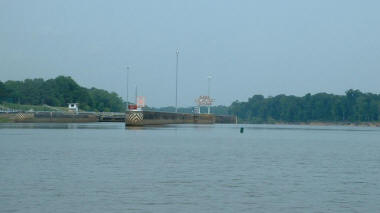
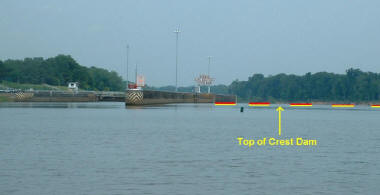
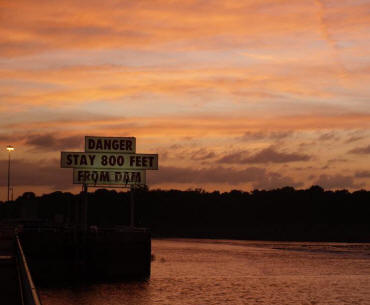
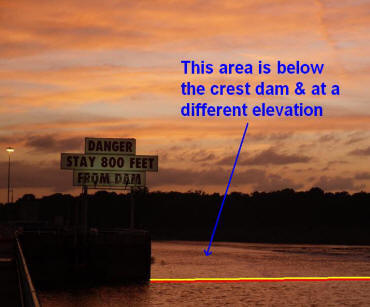
These dams are basically a concrete wall across the river which keeps the channel deep enough for navigation. Unlike what most recognize as a typical dam with exposed concrete, holding water back with controlled releases, a crest dam allows the river to continue to flow freely while raising the water level up river. The differences in river elevations on either side of the crest dam is the reason a navigation lock is necessary in order to pass vessels from the upper river level to the lower river level.
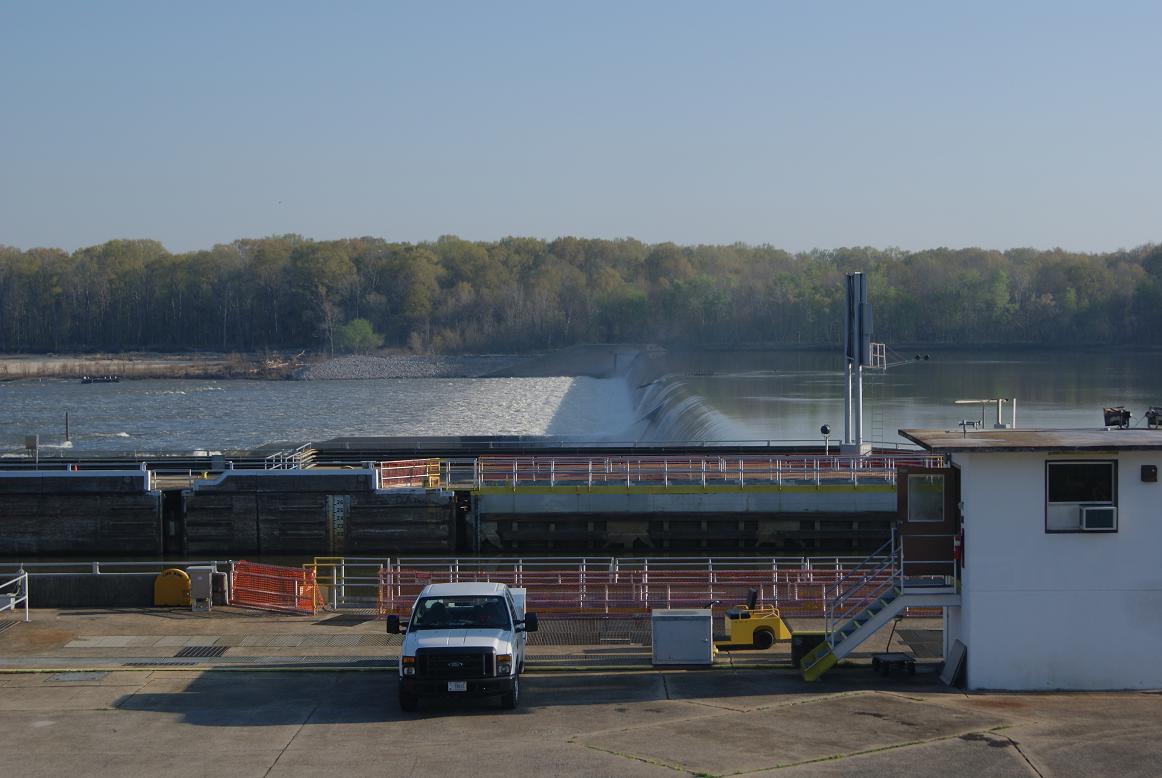
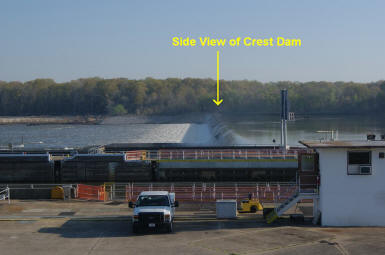
The difference in river elevations are evident in the two pictures.